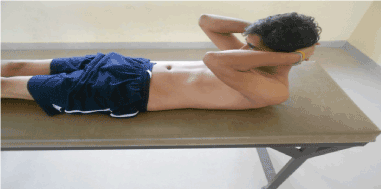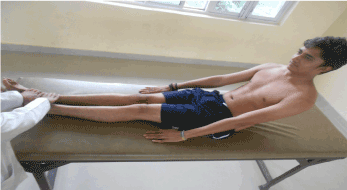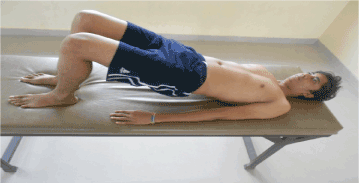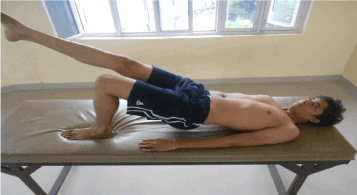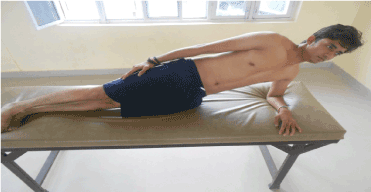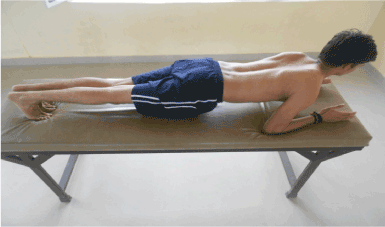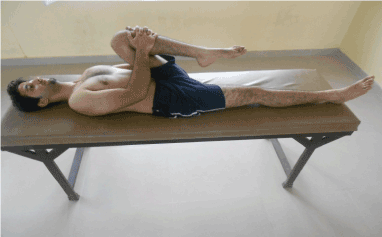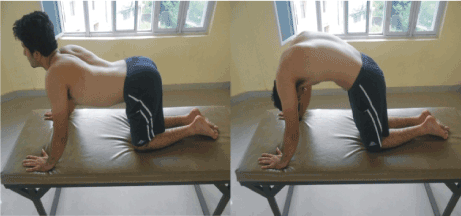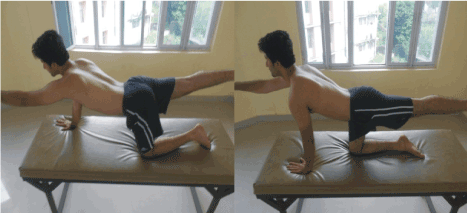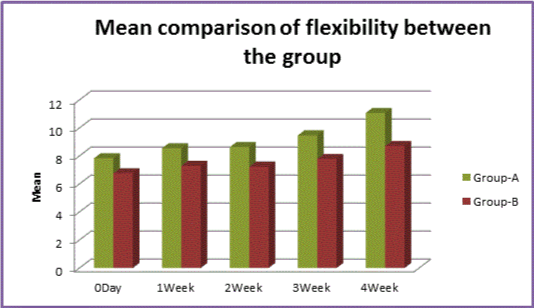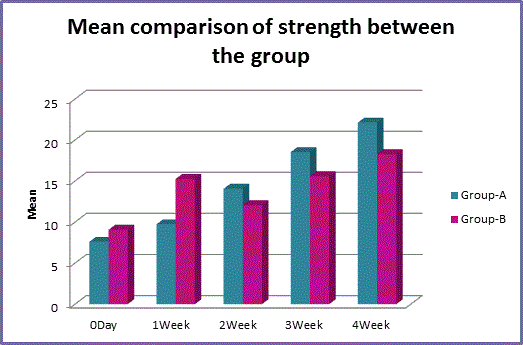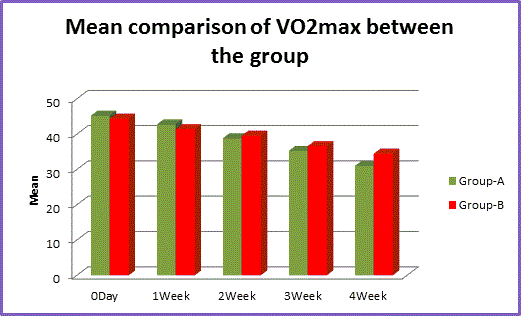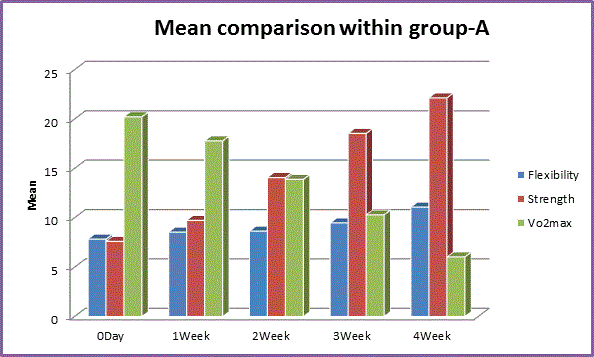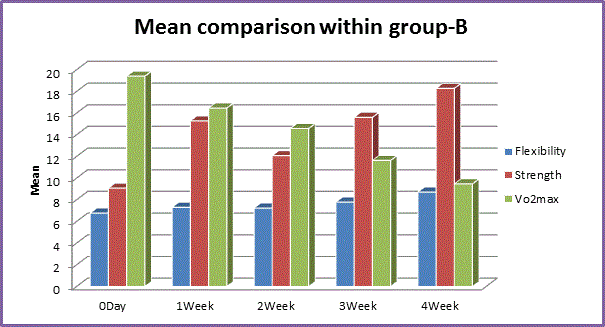The study aimed to find the effect of core strengthening on cardiovascular fitness, flexibility and strength on patients with low back pain. The benefits of core strengthening are profound and it also improves cardiovascular fitness, muscular strength, flexibility and endurance. Studies have shown that patients with chronic LBP have reduced strength and greater atrophy of the back muscles in comparison with healthy control patients. Thus the study was designed to find the effect of core strengthening on cardiovascular fitness, strength and flexibility on patients with low back pain. The data analysis revealed that both the groups showed significant improvement in VO
2max, flexibility and strength (p<0.05) within the group.
According to (Susan C. Soroskys et al.) [
1] “Cardiovascular training can enhance metabolism of free fatty acid thus reduces body fat, increases insulin sensitivity and improves blood flow to muscles, the involuntary cardiac muscles present in the heart facilitate the pumping of blood through the body. With regular exercise cardiac output increases, thus VO
2max increases. Heart rate lowers for a given level of exertion, and reduces blood lactate accumulation at a given sub-maximal level of exertion”. (Stanley P. Brown) [
14] Stated that with strengthening exercise, there is an immediate need to meet the increased demand of oxygen with an adequate supply. To do this, there is an integrated response from the cardiovascular and pulmonary systems. The heart rate and the strength of the cardiac contractions increase which produces a greater cardiac stroke volume. These factors result in an increase in the delivery of blood to the working muscles and this constitute the central factor for the increase in oxygen consumption that occurs with exercise. Both cardiac output and oxygen consumption increases step-by-step. The increase in oxygen consumption with exercise results from an increase in pulmonary ventilation. Pulmonary ventilation is the bulk of air into and out of the lungs. After the initiation of exercise, both the rate and depth of breathing increases, this results in an increase in pulmonary ventilation. As the intensity of exercise increases during activity more oxygen is extracted from the blood as the blood passes through the capillaries of the working muscles and more air is passed in and out of the lungs. The increased rate at which the lungs are ventilated allows more oxygen to be delivered to the working muscles.
Core strengthening exercise enhances flexibility of patients having low back pain. The exercises aim to correct muscle tightness, and allow the patient to assume a neutral position so that strength can be developed to help maintain correct neutral positioning during both static and dynamic conditions. Due to eccentric muscle contraction there is an overall increase in muscle length. The core muscles are the voluntary skeletal muscles and each individual muscle cell is called muscle fiber. During core strengthening exercises each muscle fiber extends to the full length of the muscle. According to (Susan C. Soroskys et al.) [
1] “Flexion during the exercises may reduce facet joint compressive forces and provide stretch to the lumbar muscles, ligaments, and myofascial structures.” (Gross and Worrell) [
15] Emphasized on the importance of flexibility enhancement and reported that enhanced flexibility has a greater effect on the range of motion and decreases the risk of musculoskeletal injuries.
Core strengthening exercises enhanced the muscular strength on the patients having low back pain. Strength of core muscles is found to be affected in the patients with LBP. Studies have shown that patients with chronic LBP have decreased strength and greater atrophy of the back muscles and most commonly multifidi muscles are found to be atrophied. According to (Faigenbaum AD) [
16] “Strength training has been shown to have a beneficial effect on several health indices, such as cardiovascular fitness, body composition, bone mineral density, blood lipid profiles, and mental health”. According to (Susan C. Soroskys et al.) [
1] “The goal of a core strengthening program for low back pain is to correct muscle weaknesses and imbalances with strengthening exercises. Strength training has been used as a successful strategy to reduce LBP and improve function.” “The strength training focuses on the abdominal and erector spine muscles which has an influence on biomechanical functions and stability of the spine and pelvis.” Resistance exercises stress the body├ó┬?┬?s musculoskeletal system, which enlarges muscle fiber and improves neural control of muscle function which results in greater muscular strength. Strength training increases the size and number of myofibrils, resulting in larger individual muscle fibers. McGraw stated that “Core exercises increases the muscle mass, strength of tendons, ligaments, and bone. It increases utilization of motor units during muscle contractions, thus increases the size and strength of fast-twitch muscle fibers from a high-resistance program and size of slow-twitch muscle fibers from a high-repetition program. It also increases blood supply to muscles (from a high-repetition program) and improved blood vessel health. It improves the coordination of motor units and increases the storage of fuel in muscles and also enhances the muscle endurance. According to (Janet Hopson et al.) “The strength of a muscle contraction depends upon the intensity of the nervous system stimulus, the number and size of motor units activated, and the types of muscle fibers that are stimulated.” When we start a resistance-training program, there is a gain in muscular strength before any increase in muscle size. This is because internal physiological adaptations to training take place before muscle enlargement. The strength of a muscular contraction depends mainly on effective recruitment of the motor units needed for the contraction. The better the body gets recruited the stronger the muscles will be. In the first few weeks of a resistance-training program, most of the adaptation involves an increased ability to recruit motor units, which causes more muscle fibers to contract. In response to resistance training the neural activation improves and as a result to this the amount of actin and myosin within the muscle fibers increases. This leads to an increase in the size or cross-sectional area of the protein filaments and the size of slow- and fast-twitch muscles, thus greater increase in strength will result from hypertrophic changes in fast-twitch muscle fibers.
Core strengthening exercise has a significant result on flexibility on patients having low back pain. Muscles prone to tightness in LBP patients include erector spinae, quadratouslumborum etc., therefore the goal of a rehabilitation program for LBP is to correct muscle weakness and imbalances with strengthening exercises. The exercises aim to correct muscle tightness, and allow the patient to assume a neutral position so that strength can be developed to help maintain correct neutral positioning during both static and dynamic conditions. Additionally, it helps to improve posture and can reduce associated back pains and further injuries, improves muscle coordination and reduces muscle soreness [
1]. The core muscles are the voluntary skeletal muscles and each individual muscle cell is called muscle fiber. During core strengthening exercises each muscle fibre extends to the full length of the muscle. Due to eccentric muscle contraction there is an overall increase in muscle length [
2]. According to Susan C. Soroskys “Flexion during the exercises may reduce facet joint compressive forces and provide stretch to the lumbar muscles, ligaments, and myofascial structures.” Gross and Worrell [
16] emphasized on the importance of flexibility enhancement and reported that enhanced flexibility has a greater effect on the range of motion and decreases the risk of musculoskeletal injuries.
